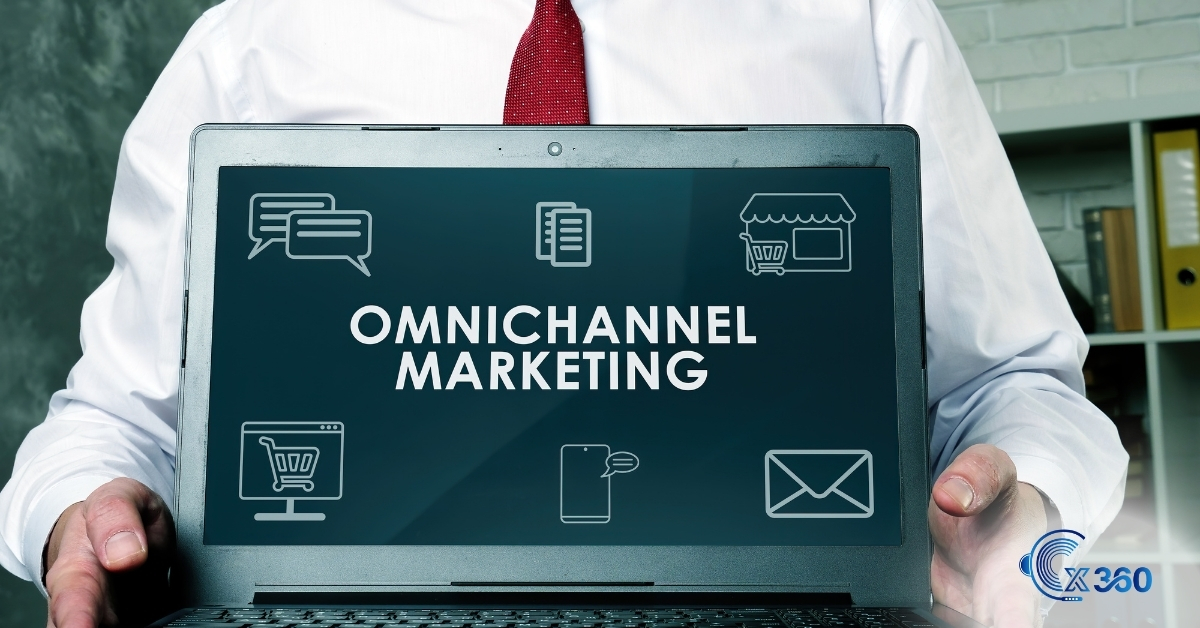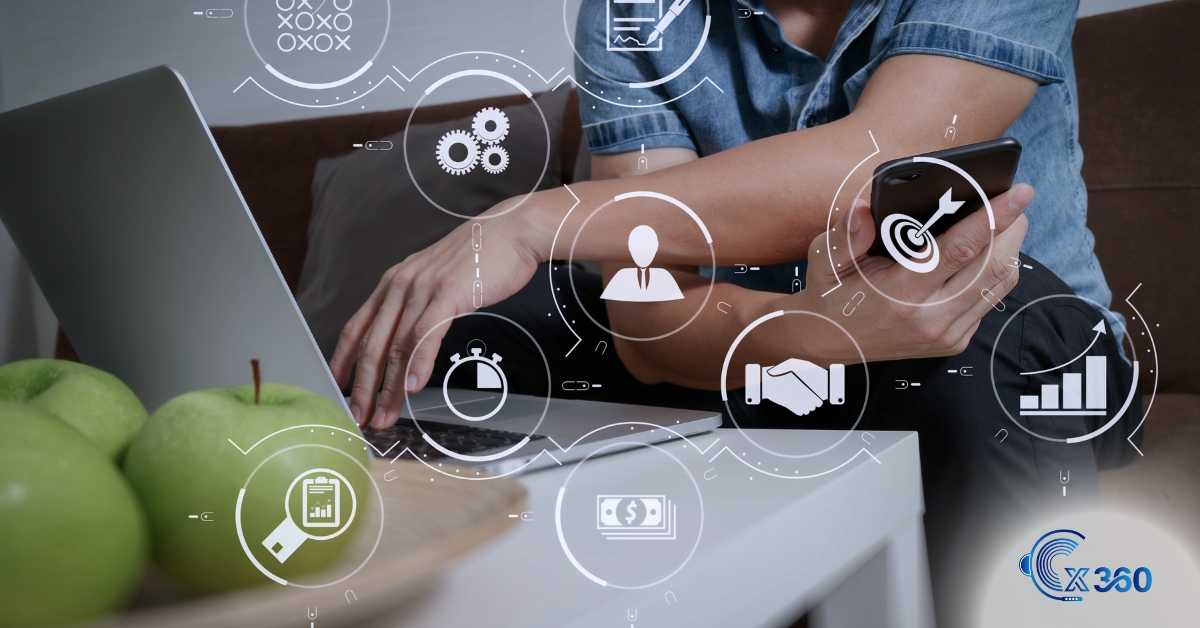2025 is all about an exceptional customer experience, as customers want to connect with businesses on their own terms. It can be social media, live chat, email, phone, mobile apps, or in-store, and they also expect those experiences to be connected, personalized, and consistent. So to meet these expectations, businesses must go beyond traditional customer service models and invest in omnichannel contact center solutions for the best possible experience. This enables unified, real-time, and AI-refined interactions across every customer touchpoint. So here, learn about how to deliver a seamless Omnichannel experience. Make sure that you read it till the end.
What is a Seamless Omnichannel Experience?
A seamless omnichannel experience is one in which customers can switch between communication channels effortlessly while maintaining continuity of service. This is an amazing mechanism for keeping the customers engaged.
For instance, a customer who begins a conversation with a chatbot on your website should be able to escalate to a live agent via phone and can even continue the conversation via email without needing to repeat themselves. This is amazing, right?
In short, this continuity enhances:
- Customer satisfaction (CSAT)
- Brand loyalty
- Operational efficiency
- First contact resolution rates
Why Omnichannel Customer Service Is Essential in 2025?

After the pandemic, the digital transformation accelerated at an unimaginable speed. And from there on, it has permanently changed consumer behavior. This makes it a very critical service to have in 2025.
Specifically, why?
- 75% of consumers use three or more channels during a single service interaction.
- Customer loyalty is tied closely to service experience, not just product quality or price.
- Real-time communication, hyper-personalization, and proactive service are expected, not “nice-to-haves.
A well-executed omnichannel customer service strategy helps businesses:
- Reduce customer effort
- Increase engagement
- Drive higher customer lifetime value (CLV)
- Prevent churn
Core pillars of this service
To deliver seamless service, businesses must implement a service that integrates the following key pillars:
1. Unified Communication Infrastructure
A true omnichannel platform supports real-time communication across multiple channels, such as:
- Voice (inbound/outbound calls)
- Email
- Live chat
- SMS and messaging apps (WhatsApp, Facebook Messenger, Telegram)
- Social media platforms (Instagram, X, LinkedIn)
- Video chat (especially useful in healthcare and education)
- Self-service channels like IVR, FAQs, and chatbots
All these channels are centrally managed from a single dashboard with shared customer data and history.
2. Centralized Customer Data and 360° View

A unified customer profile is critical. This includes:
- Interaction history across all channels
- Purchase history and preferences
- Account data and issue resolution history
- Behavioral analytics
This enables agents to provide personalized support without forcing customers to repeat themselves.
3. AI-Powered Assistance
Artificial Intelligence is the backbone of modern day customer service. Key AI-driven components include:
- Chatbots: Handle FAQs and basic transactions 24/7
- Conversational AI: Understands intent, context, and sentiment
- Intelligent routing: Directs inquiries to the most qualified agents
- Predictive analytics: Forecasts customer needs and enables proactive outreach
4. Channel-Independent Workflow Automation
Ensure that customer service workflows (ticketing, escalation, feedback collection, etc.) are consistent across all channels. This improves resolution times and operational efficiency.
5. Integrated Knowledge Base and Self-Service
Empower customers with intelligent self-service tools like:
- Dynamic FAQs
- Video tutorials
- Interactive voice responses (IVRs)
- AI-powered search in help centers
The best omnichannel systems allow agents and bots to share a single knowledge base, ensuring consistent answers.
How to Build a Seamless Omnichannel Strategy in 2025?
Step 1: Understand the Customer Journey
Map the entire customer lifecycle—from awareness to post-purchase support. Identify pain points, common transitions between channels, and high-friction moments.
Step 2: Eliminate Channel Silos
Break down operational silos between departments. For example:
- Marketing should share campaign data with support teams.
- Sales should have access to the support history.
- Support should provide feedback loops into product development.
A shared omnichannel CRM ensures continuity and collaboration.
Step 3: Choose the Right Omnichannel Contact Center Platform
When selecting a platform, look for:
- Native multi-channel integration
- Cloud scalability and uptime reliability
- Open APIs and integration with CRM, ERP, and analytics tools
- Real-time reporting dashboards
- Advanced security and compliance (e.g., GDPR, HIPAA)
Step 4: Train and Empower Agents
Provide ongoing training in:
- Soft skills (empathy, active listening)
- Channel-specific etiquette (e.g., tone for social vs. email)
- AI tool usage
- Cross-functional knowledge (sales, tech, billing)
Equip agents with intuitive UIs, real-time data access, and AI-powered suggestions to boost productivity.
Step 5: Measure Performance and Optimize
Track KPIs such as:
- First Contact Resolution (FCR)
- Customer Effort Score (CES)
- Omnichannel engagement rate
- Average Handle Time (AHT)
- Customer Satisfaction (CSAT)
- Agent utilization and productivity
Use this data to fine-tune processes, train staff, and evolve your service strategy.
Real-World Use Cases for Omnichannel in 2025
- Retail
Customers shop online, ask questions via live chat, return items in-store, and receive SMS delivery updates, all managed through one system.
- Healthcare
Patients book appointments via apps, consult via video, receive prescriptions through email, and follow up via SMS, all tracked in a centralized patient portal.
- Finance
Clients initiate fraud claims through an app chatbot, continue via phone, and receive email updates all interactions logged for transparency and audit.
- Travel
Travelers manage flight bookings on the website, get alerts via WhatsApp, contact agents through Facebook Messenger, and access itinerary updates on the mobile app.
Future Trends in Omnichannel Customer Service
Here’s what’s next in 2025 and beyond:
- Hyper-personalization using GenAI: Customer journeys will be dynamically personalized using advanced machine learning.
- Voice and Visual Commerce: Integration of voice assistants and AR will transform how consumers explore and buy products.
- Emotion AI: Systems will detect and adapt to customer emotion in real time, enhancing empathy and support.
- Unified customer identity: A universal customer ID across all channels and platforms will eliminate fragmentation.
Final Thoughts
As you’re now aware of every bit of how to deliver a seamless omnichannel experience, a seamless omnichannel customer service strategy is a powerful differentiator in 2025. It blends technology, data, and human connection to create frictionless, memorable experiences. So, opting for the service from CX360 can be the game-changer for you, as we are the most trusted omnichannel customer service provider.


